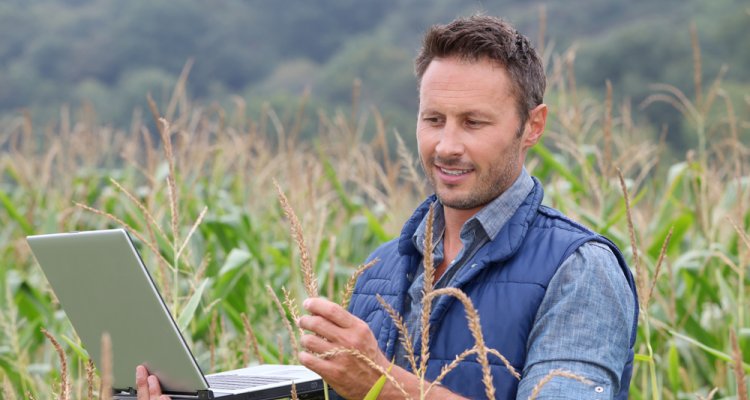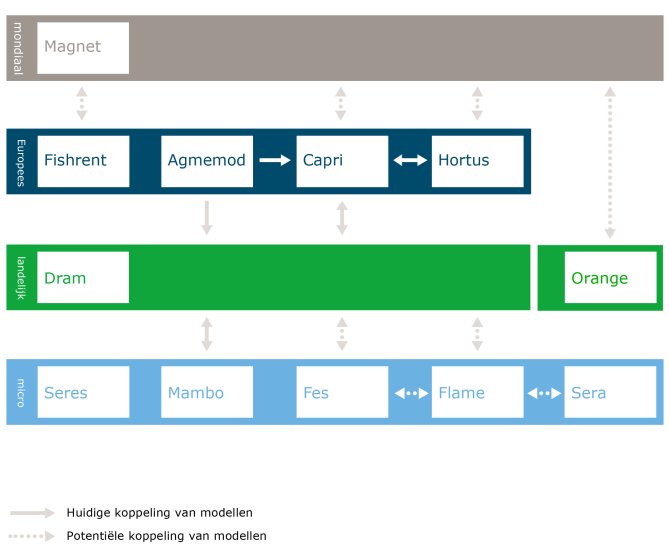
Models
Models and tools enable complex economic problems to be approached at a corporate, sectoral or macro level in a strategic way, and offer a structured method for analysing decision-making or selection processes. Models also facilitate study from various perspectives and ensure that no relevant points of view are overlooked. Wageningen Social & Economic Research uses a variety of quantitative models.
MAGNET
MAGNET is a general equilibrium model of the global economy that describes the development of prices, production and trade at an individual country level. Wageningen Social & Economic Research uses MAGNET to calculate the effects of changes in the world economy and policy changes, such as international trade barriers. The model is an important cornerstone within Wageningen Social & Economic Research for quantitative analyses related to the bio-economy and food security.
ORANGE
ORANGE is a national general equilibrium model of the Dutch economy at the provincial level. It links the agricultural sector to other economic sectors, and can therefore be used to calculate the effects of general economic policies and developments on the agricultural sector and vice versa.
DRAM
DRAM is a regionalised PMP model of Dutch agriculture. It provides a high level of detail for regions and company types, and is used to calculate policy changes and the effects of external influences on Dutch agriculture, with a special focus on environmental aspects.
MAMBO
MAMBO is a Big Data-based (i.e., featuring all Dutch agricultural businesses), econometric model of the use, production and transport of minerals in the Netherlands. It is used to calculate the effects of agricultural and mineral policies on the environment on a national and regional level.
SERES
The SERES (Selection of Reserve Sites) model was developed as an expansion of the cost effectiveness instruments that allows a selection of regions based on costs and spatial interaction. It can help determine the potential contribution of nature areas to the sustainable preservation of target varieties. SERES performs a spatial, economic optimisation based on the results of LARCH (a spatial dispersion model of varieties), and information from a nature management cost database.
SERA
SERA is a spatially explicit agent-based model (a computational model which studies the effect of the action and interaction of individual elements on the system as a whole). It simulates the effects of external price and policy developments on the economic and ecological resilience of smaller regions, based on detailed information such as topography, land use, soil maps, groundwater maps, agricultural population, livestock and landscape quality.
FES
FES is a financial-economic micro simulation model. Based on the Business Information Network it calculates the effects of policy measures which demand investments from agricultural companies, and specifically the effects of these investments on the financial position and income of agricultural businesses.
Models Wageningen Social & Economic Research

FLAME
FLAME is a bio-economic model for dairy farming that simulates business behaviour based on optimisation. It indicates the agronomical, environmental and economic effects of a change in prices, policies and/or technological developments, and can be used for a wide range of policy evaluations. An application for educational purposes or individual businesses is currently being developed, and the model is also being expanded for applications in horticulture and pig farming.
AGMEMOD
AGMEMOD is an econometric model of agriculture in EU member states and candidate members. Managed by Wageningen Social & Economic Research in a consortium with institutions in other European countries, it is used to calculate EU policies and the effects of entry into the EU.
CAPRI
CAPRI is a PMP model of European agriculture at the regional level (NUTS2, Eurostat). Originally developed by Bonn University, Wageningen Social & Economic Research mainly uses it for research into European consortiums to calculate the effects of agricultural policy on regional developments, nature, the environment and landscapes.
HORTUS
HORTUS is a partial equilibrium model (supply and demand are explicitly calculated for only one sector) of horticulture in European countries with a high level of detail in horticulture sectors. Wageningen Social & Economic Research uses the model to calculate the effects of developments in policy, international markets and consumer preferences on the horticulture sector.
FISHRENT
FISHRENT is a regionalised bio-economic model of European fisheries. It simulates the effects of changes in areas such as policies, fish stock or oil prices on the costs and yield of fishery at a detailed level of individual fleets and fish species.
The AGMEMOD, CAPRI, HORTUS, and FISHRENT models are focused on the European economy, with the rest of the world being considered as a single region. These models go into the details of the agricultural sector.